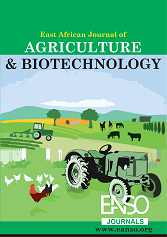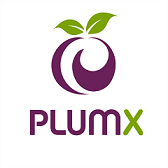Organophosphate Pesticide Residues in Food Products in Kenya and their Chromatographic Detection: A Systematic Review
Abstract
Organophosphate pesticides are used worldwide to control several pests and meet food demand. These chemicals harm non-target animals and people when misused. Thus, they are a health and environmental concern. The purpose of the systematic review was to synthesise the amount, breadth, and quality of evidence from empirical studies concerning the presence, type, and quantity of OPs in food products in Kenya. A systematic review was done by following the PRISMA protocol. For the identification of studies, the following databases were used: Google Scholar, Web of Science, Scopus, and PubMed. The study focused on peer-reviewed articles published between January 2001 and August 2022. Twelve studies met the inclusion criteria for the scoping review. The main methods used in detecting and quantifying organophosphates in the studies were High-Performance Liquid Chromatography (HPLC) and Gas Chromatography-Mass Spectrometry (GC-MS). Most studies (86.67%) reported significant levels of OPs in food products, exceeding the MRLs and the Acceptable Daily Intake (ADIs) set by the World Health Organization. Six of the studies (50%) reported the presence of OPs in plant products (vegetables, cereals, and fruits), while three (25%) found residues in animal products (milk and meat). The most notable OP compounds detected were chlorpyrifos, acephate, profenofos, diazinon, omethoate, and dimethoate. Most of the food samples in the reviewed studies presented contamination, making them a significant risk to human health due to bioaccumulation. Studies done in Kenya for the last 20 years continue to report high levels of organophosphate residues and their metabolites in food products, both from plant and animal origin. Although the residues are below MLRs in some samples, they can accumulate at higher levels in humans, becoming a severe health risk
Downloads
References
Abraham, J., & Silambarasan, S. (2016). Biodegradation of chlorpyrifos and its hydrolysis product 3,5,6-trichloro-2-pyridinol using a novel bacterium Ochrobactrum sp. JAS2: A proposal of its metabolic pathway. Pesticide Biochemistry and Physiology, 126, 13–21. https://doi.org/10.1016/j.pestbp.2015.07.001
Akan, J. C. (2013). Organophosphorus Pesticide Residues in Vegetable and Soil Samples from Alau Dam and Gongulong Agricultural Areas, Borno State, Nigeria. International Journal of Environmental Monitoring and Analysis, 1(2), 58. https://doi.org/10.11648/j.ijema.20130102.14
Ambreen, S., & Yasmin, A. (2021). Novel degradation pathways for Chlorpyrifos and 3, 5, 6-Trichloro-2-pyridinol degradation by bacterial strain Bacillus thuringiensis MB497 isolated from agricultural fields of Mianwali, Pakistan. Pesticide Biochemistry and Physiology, 172, 104750. https://doi.org/10.1016/j.pestbp.2020.104750
Anode, S. O., Onguso, J., & Magoma, G. (2018). Qualitative and quantitative analysis of pesticide residues in flower farms soils around Lake Naivasha basin, Kenya. International Journal of Chemical Studies, 6(6), 1615–1623. https://www.chemijournal.com/archives/?year=2018&vol=6&issue=6&ArticleId=4419&si=false
Asamba, M. N., Mugendi, E. N., Oshule, P. S., Essuman, S., Chimbevo, L. M., & Atego, N. A. (2022). Molecular characterisation of chlorpyrifos degrading bacteria isolated from contaminated dairy farm soils in Nakuru County, Kenya. Heliyon, 8(3), e09176. https://doi.org/10.1016/j.heliyon.2022.e09176
Atego, N., Gicharu, G., Chimbevo, L., Oshule, P., Essuman, S., & Asamba, M. (2021). Detection and Quantification of Chlorpyrifos in Soil, Milk, Dip Wash, and Spray Race Residues Using High-Performance Liquid Chromatography in Selected Dairy Farms in Kenya. Science Journal of Analytical Chemistry, 9(4). https://doi.org/10.11648/j.sjac.20210904.12
Carvalho, F. P. (2017). Pesticides, environment, and food safety. Food and Energy Security, 6(2), 48–60. https://doi.org/10.1002/fes3.108
Chawla, P., Kaushik, R., Shiva Swaraj, V. J., & Kumar, N. (2018). Organophosphorus pesticide residues in food and their colorimetric detection. Environmental Nanotechnology, Monitoring & Management, 10, 292–307. https://doi.org/10.1016/j.enmm.2018.07.013
Doulia, D. S., Anagnos, E. K., Liapis, K. S., & Klimentzos, D. A. (2016). Removal of pesticides from white and red wines by microfiltration. Journal of Hazardous Materials, 317, 135–146. https://doi.org/10.1016/j.jhazmat.2016.05.054
Farhan, M., Ahmad, M., Kanwal, A., Butt, Z. A., Khan, Q. F., Raza, S. A., Qayyum, H., & Wahid, A. (2021). Biodegradation of chlorpyrifos using isolates from contaminated agricultural soil, its kinetic studies. Scientific Reports, 11(1), 10320. https://doi.org/10.1038/s41598-021-88264-x
Fatunsin, O. T., Oyeyiola, A. O., Moshood, M. O., Akanbi, L. M., & Fadahunsi, D. E. (2020). Dietary risk assessment of organophosphate and carbamate pesticide residues in commonly eaten food crops. Scientific African, 8, e00442. https://doi.org/10.1016/j.sciaf.2020.e00442
Fothergill, A., & Abdelghani, A. (2013). A review of pesticide residue levels and their related health exposure risks. WIT Transactions on Ecology and the Environment. https://doi.org/10.2495/fenv130181
Geed, S. R., Kureel, M. K., Giri, B. S., Singh, R. S., & Rai, B. N. (2017). Performance evaluation of Malathion biodegradation in batch and continuous packed bed bioreactor (PBBR). Bioresource Technology, 227, 56–65. https://doi.org/10.1016/j.biortech.2016.12.020
Hadei, M., Mesdaghinia, A., Nabizadeh, R., Mahvi, A. H., Rabbani, S., & Naddafi, K. (2021). A comprehensive systematic review of photocatalytic degradation of pesticides using nano TiO2. Environmental Science and Pollution Research, 28(11), 13055–13071. https://doi.org/10.1007/s11356-021-12576-8
Huete-Soto, A., Castillo-González, H., Masís-Mora, M., Juan Salvador Chin-Pampillo, & Rodríguez-Rodríguez, C. E. (2017). Effects of oxytetracycline on the performance and activity of biomixtures: Removal of herbicides and mineralisation of chlorpyrifos. Journal of Hazardous Materials, 321, 1–8. https://doi.org/10.1016/j.jhazmat.2016.08.078
Ifediegwu, M., Agu, K., & Awah, N. (2015). Isolation, Growth and Identification of Chlorpyrifos Degrading Bacteria from Agricultural Soil in Anambra State, Nigeria. Universal Journal of Microbiology Research, 3(4), 46–52. https://doi.org/10.13189/ujmr.2015.030402
Ilia, G., & Funar-Timofei, S. (2020). Evaluation of Organophosphate Pesticide Residues in Food Using the Partial Least Squares Method. Chemistry Proceedings, 3(1), 19. https://doi.org/10.3390/ecsoc-24-08307
Inonda, R., Njage, E., Ngeranwa, J., & Mutai, C. (2015). Determination of Pesticide Residues in Locally Consumed Vegetables in Kenya. African Journal of Pharmacology and Therapeutics. https://www.semanticscholar.org/paper/Determination-of-Pesticide-Residues-in- Locally- in- Inonda- Njage/6263a51f67b269dbbe9c691d9dcc806624742a7c
Karanja, N., Njenga, M., Mutua, G., Lagerkvist, C., Kutto, E., & Okello, J. (2012). Concentrations of Heavy Metals and Pesticide Residues in Leafy Vegetables and Implications for Peri-urban Farming in Nairobi, Kenya. Journal of Agriculture, Food Systems, and Community Development, 255–267. https://doi.org/10.5304/jafscd.2012.031.003
Kariathi, V., Kassim, N., & Kimanya, M. (2016). Pesticide exposure from fresh tomatoes and its relationship with pesticide application practices in Meru district. Cogent Food & Agriculture, 2(1). https://doi.org/10.1080/23311932.2016.1196808
Kipkemoi, E., Andayi, W. A., Njagi, E. C., & Ptoton, B. (2020). Analysis of Pesticide Residues in Tomatoes and French Beans from Murang’a and Kiambu Counties, Kenya. European Journal of Nutrition & Food Safety, 121– 132. https://doi.org/10.9734/ejnfs/2020/v12i1130328
Kumar, U., Berliner, J., Adak, T., Rath, P. C., Dey, A., Pokhare, S. S., Jambhulkar, N. N., Panneerselvam, P., Kumar, A., & Mohapatra, S. D. (2017). Non-target effect of continuous application of chlorpyrifos on soil microbes, nematodes and its persistence under sub-humid tropical rice-rice cropping system. Ecotoxicology and Environmental Safety, 135, 225–235. https://doi.org/10.1016/j.ecoenv.2016.10.003
Lalah, J. O., Yugi, P. O., Jumba, I. O., & Wandiga, S. O. (2003). Organochlorine Pesticide Residues in Tana and Sabaki Rivers in Kenya. Bulletin of Environmental Contamination and Toxicology, 71(2), 298–307. https://doi.org/10.1007/s00128-003-0164-4
López-Gálvez, N., Wagoner, R., & Quirós-Alcalá, L. (2019). Systematic Literature Review of the Take-Home Route of Pesticide Exposure via Biomonitoring and Environmental Monitoring. International Journal of Environmental Research and Public Health, 16(12), 2177. https://doi.org/10.3390/ijerph16122177
Macharia, I. (2015). Pesticides and Health in Vegetable Production in Kenya. BioMed Research International, 2015, 1–10. https://doi.org/10.1155/2015/241516
Marete, G. M., Shikuku, V. O., Lalah, J. O., Mputhia, J., & Wekesa, V. W. (2020). Occurrence of pesticides residues in French beans, tomatoes, and kale in Kenya, and their human health risk indicators. Environmental Monitoring and Assessment, 192(11). https://doi.org/10.1007/s10661-020-08662-y
Marete, G., Lalah, J., Mputhia, J., & Wekesa, V. (2021). Pesticide usage practices as sources of occupational exposure and health impacts on horticultural farmers in Meru County, Kenya. Heliyon, 7(2), e06118. https://doi.org/10.1016/j.heliyon.2021.e06118
Mbaria, J., Ogara, W., & Gitau, F. (2010). Pesticide Residues in Beef and Camel Meat From Slaughterhouses in 13 Districts in Kenya. Kenya Veterinarian, 33(1). https://doi.org/10.4314/kenvet.v33i1.55767
Mdeni, N. L., Adeniji, A. O., Okoh, A. I., & Okoh, O. O. (2022). Analytical Evaluation of Carbamate and Organophosphate Pesticides in Human and Environmental Matrices: A Review. Molecules, 27(3), 618. https://doi.org/10.3390/molecules27030618
Musa, S., Gichuki, J. W., Raburu, P. O., & Aura, C. M. (2011). Risk assessment for organochlorines and organophosphates pesticide residues in water and Sediments from lower Nyando/Sondu-Miriu river within Lake Victoria Basin, Kenya. Lakes & Reservoirs: Research & Management, 16(4), 273–280. https://doi.org/10.1111/j.1440-1770.2011.00486.x
Nasef, I., Leboudy, A., Amer, A., & Elansary, M. (2019). Monitoring of some pesticides residues in raw milk in Alexandria province, Egypt. Alexandria Journal of Veterinary Sciences, 60(1), 1. https://doi.org/10.5455/ajvs.1373
Nelson, S. (2022, April 22). Russia-Ukraine War: The Realist Perspective. MIR. https://www.mironline.ca/russia-ukraine-war-the-realist-perspective/
Ngolo, P., Nawiri, M., Machocho, A., & Oyieke, H. (2019). Pesticide Residue Levels in Soil, Water, Kales and Tomatoes in Ewaso Narok Wetland, Laikipia, County, Kenya. Journal of Scientific Research and Reports, 1–11. https://doi.org/10.9734/jsrr/2019/v24i530165
Okoffo, E. D., Mensah, M., & Fosu-Mensah, B. Y. (2016). Pesticides exposure and the use of personal protective equipment by cocoa farmers in Ghana. Environmental Systems Research, 5(1). https://doi.org/10.1186/s40068-016-0068-z
Omwenga, I. M. (2021). In vitro-in silico methods for risk assessment of organophosphate pesticides (OPs) as found in commonly consumed vegetables in Kenya. Wageningen University. https://doi.org/10.18174/553680
Omwenga, I., Kanja, L., Nguta, J., Mbaria, J., & Irungu, P. (2016). Organochlorine pesticide residues in farmed fish in Machakos and Kiambu counties, Kenya. Cogent Environmental Science, 2(1). https://doi.org/10.1080/23311843.2016.1153215
Omwenga, I., Kanja, L., Zomer, P., Louisse, J., Rietjens, I. M. C. M., & Mol, H. (2020). Organophosphate and carbamate pesticide residues and accompanying risks in commonly consumed vegetables in Kenya. Food Additives & Contaminants: Part B, 14(1), 48–58. https://doi.org/10.1080/19393210.2020.1861661
Otieno, P., Okinda Owuor, P., Lalah, J. O., Pfister, G., & Schramm, K. W. (2014). Monitoring the occurrence and distribution of selected organophosphates and carbamate pesticide residues in the ecosystem of Lake Naivasha, Kenya. Toxicological & Environmental Chemistry, 97(1), 51–61. https://doi.org/10.1080/02772248.2014.942309
Rêgo, I. C. V., Dos Santos, G. N. V., Dos Santos, G. N. V., Ribeiro, J. S., Lopes, R. B., Dos Santos, S. B., De Sousa, A., Mendes, R. D. A., Taketomi, A. T. F., Vasconcelos, A. A., & Taube, P. S. (2019). Organochlorine pesticides residues in commercial milk: a systematic review. Acta Agronómica, 68(2), 99–107. https://doi.org/10.15446/acag.v68n2.77925
Rubí-Juárez, H., Cotillas, S., Sáez, C., Cañizares, P., Barrera-Díaz, C., & Rodrigo, M. A. (2016). Use of conductive diamond photoelectrochemical oxidation for the removal of pesticide glyphosate. Separation and Purification Technology, 167, 127–135. https://doi.org/10.1016/j.seppur.2016.04.048
Swati, A., & Hait, S. (2017). Fate and bioavailability of heavy metals during vermicomposting of various organic wastes—A review. Process Safety and Environmental Protection, 109, 30–45. https://doi.org/10.1016/j.psep.2017.03.031
Teysseire, R., Manangama, G., Baldi, I., Carles, C., Brochard, P., Bedos, C., & Delva, F. (2020). Assessment of residential exposures to agricultural pesticides: A scoping review. PLOS ONE, 15(4), e0232258. https://doi.org/10.1371/journal.pone.0232258
Uniyal, S., Sharma, R. K., & Kondakal, V. (2021). New insights into the biodegradation of chlorpyrifos by a novel bacterial consortium: Process optimisation using general factorial experimental design. Ecotoxicology and Environmental Safety, 209, 111799. https://doi.org/10.1016/j.ecoenv.2020.111799
Wanjiku, Wanjiku, S., Madadi Odongo, V., Wandiga, S. O., Omayio, D. G., & Okumu, M. O. (2022). Estimation and human health risk assessment of organochlorine and organophosphate pesticide residues in raw milk collected in Kenya. F1000Research, 11, 14. https://doi.org/10.12688/f1000research.74748.1
Yura, W. F., Muhammad, F. R., Mirza, F. F., Maurend, Y. L., Widyantoro, W., Farida, S. S., Aziz, Y. P., Desti, A., Edy, W., Septy, M., Sutra, D., Alifia, I. B., Nanda, I. V. M., & Fikri, E. (2021). Pesticide residues in food and potential risk of health problems: a systematic literature review. IOP Conference Series: Earth and Environmental Science, 894(1), 012025. https://doi.org/10.1088/1755-1315/894/1/012025
Copyright (c) 2023 Micah Nyabiba Asamba, Miriam Wepukhulu

This work is licensed under a Creative Commons Attribution 4.0 International License.




























